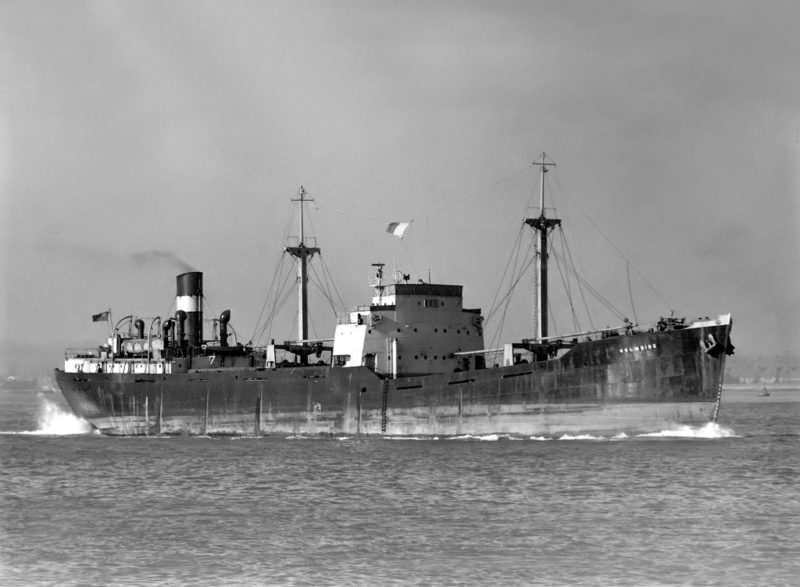
John Walter Burnett and his brother Norman Burnett of Tynemouth ordered a small steamer in 1889 from the Bill Quay yard of Wood, Skinner & Co. which was delivered in November of that year as Angelus. Their father Jacob Burnett was the last local chemical manufacturer, and while John became interested in exporting coal Norman qualified as a professional engineer. Angelus was the first in a fleet of 43 establishing a company that was to last for 81 years before being taken over by Canadians. The history is typical of many northern shipping companies which began in the London and near Continental coal trade, improving their fleets with gradually increasing size of ships until the decline of the independent collier owner forced an entry into world tramping.
Many examples exist of long associations between tramp owner and shipbuilder e.g. Lyle Shipping Co. Ltd. and the Lithgow Brothers, Hain Steamship Co. Ltd., and John Readhead. Burnett were no exception, for in the first 32 years of existence all their ships came from Wood, Skinner & Co. Ltd. of Gateshead, and the association was only broken by the liquidation of the shipbuilder.
John Burnett took in various partners in 1891 and formed Burnett & Co. and their second steamer Tynemouth was delivered in June of that year. Although freight rates were bad in the early 1890s Wallsend followed in 1893 and Marsden in 1895. Gosforth of August 1898 was their first steamer to top 1,000 gross tons, and a small but balanced fleet of five colliers operated in 1900, with three new sisters Heworth, Hebburn and Birtley. As colliers were sold to other local owners such as Witherington & Everett, new ones were ordered and Marsden (2) of July 1901 maintained the fleet at five colliers. However the fleet was increased to six with the delivery of Tynemouth (2) in January 1902 for the newly formed Burnett Steamship Co. Ltd.
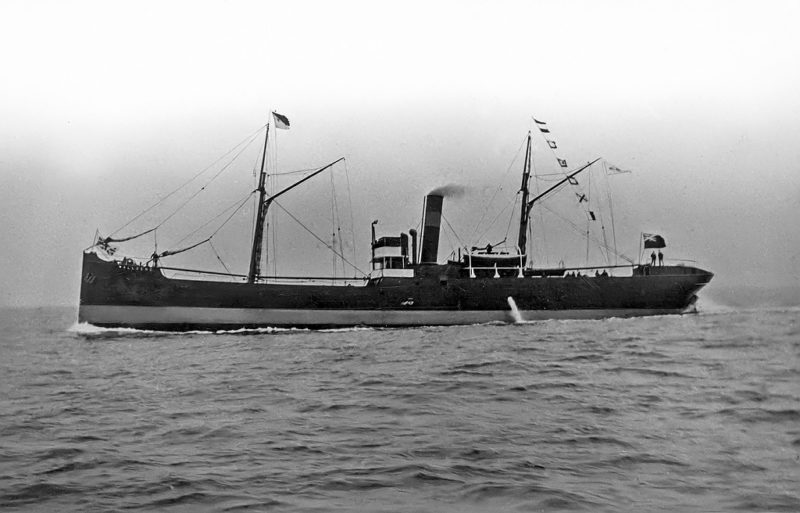

Slightly larger sister colliers Hartley, Bentinck, Gosforth and Towneley followed, but Birtley (2) of June 1906 replaced her namesake which had become the company’s first marine casualty in November 1905 when wrecked north of Flamborough Head while on passage to London with Tyne coal. Heworth was sold in 1906 to local collier owner E.R. Newbigin SS Co. without change of name and replaced by the new Horden. The next two sisters Burnhope and Hebburn (2) were of nearly 2,000 gross tons, and thus capable of Baltic and Mediterranean trading. Hartley was sold in 1909 to well-known liner company British & African S.N. Co. Ltd. with Elder, Dempster of Liverpool as managers. She was replaced by the new sisters Tynemouth (3) and Barmoor that year. Towneley (2) and Marsden (3) of 1910 saw a further jump in size to 2,470 gross tons but proved to be the last colliers built before WWI when the fleet was eight strong. Six of these were to be lost by enemy action:-
- 20.9.1915 – Horden, mined and sunk near Aldeburgh buoy.
- 31.12.1915 – Tynemouth, left Cardiff for Scapa Flow and disappeared.
- 14.12.1916 – Burnhope, mined and sunk in Hartlepool Bay, Master lost.
- 4.1.1918 – Birtley, torpedoed and sunk North of Flamborough Head, 8 lost.
- 31.1.1918 – Towneley, torpedoed and sunk 18nm from Trevose Head, 6 lost.
- 14.8.1918 – Wallsend, torpedoed and sunk 1nm SE of Robin Hood Bay.
- 25.9.1918 – Hebburn, torpedoed and sunk 14nm S of Minehead, 6 lost.
The lost Wallsend was one of four sisters completed during 1916/17 and the fleet at the end of the war consisted of five colliers plus three managed ships including two standard ‘War’ colliers. Fortunately, John Burnett did not join the post-war scramble for new tonnage which resulted in an astronomical rise in prices. When the inevitable slump followed, many owners were in financial trouble and apart from those that went bankrupt, many were left with vastly over-valued ships unable to make a profit. Many old-established tramp owners and a few new ones such as Edgar Edwards of Cardiff never recovered from this disastrous period. Some carried on through the 1920s but their lack of reserves spelt disaster in the depression of the 1930s.
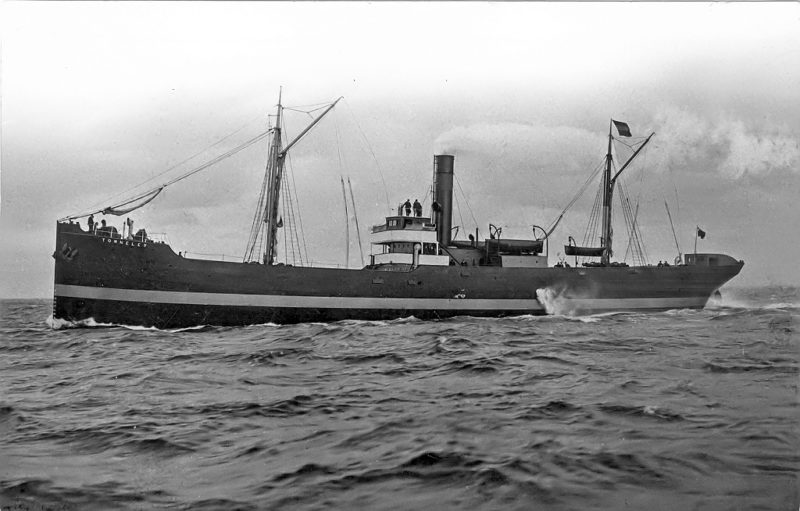
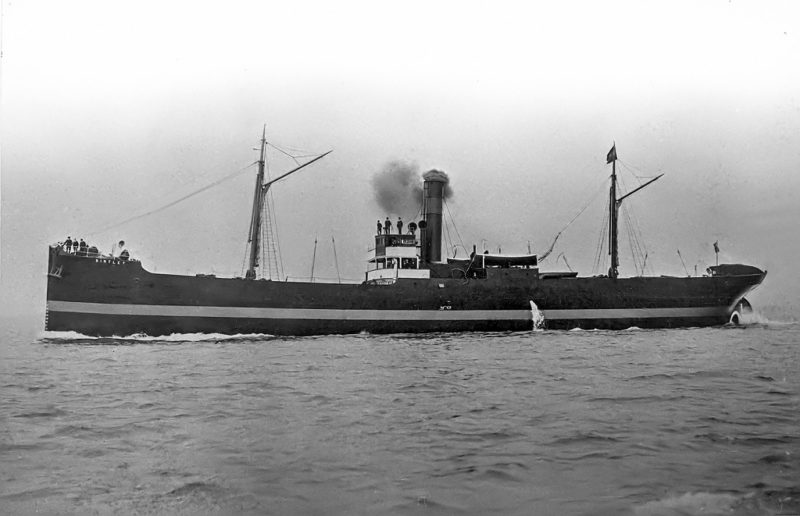
Wallsend (3) of 4,300 dwt was delivered at the end of 1922 from a different builder for the first time, Irvine’s SB & DD Co. Ltd. of Hartlepool, and a sister Heworth (2) was completed by the same yard in April 1924. This Heworth was the last ship to be built at Irvine’s Harbour yard and was launched in February 1924 by Mrs. English, wife of a director of the Heworth Coal Company and good clients of John Burnett. She was a self-trimming collier with a North Eastern Marine triple expansion steam engine which gave the high speed for the time of 14 knots. She was equipped with radio, with master and mate amidships and seamen and firemen berthed aft. The Wood, Skinner association was resumed for the similar Birtley (3), Towneley (3), Marsden (4) and Hebburn (3), the last named being completed in July 1924 and was the last of 30 ships for the company before the builder went into liquidation.
Attempts during the bad trading conditions of the early and mid 1920s to enter the world-wide tramp trades were hampered by the small size of company ships, so orders were placed in 1927 for two tramps of over 6,000 dwt from the Northumberland Shipbuilding Co. Ltd. at Howdon on Tyne, and for a slightly smaller one from the Blyth shipyard of Cowpen Drydock & Shipbuilding Co. Ltd.
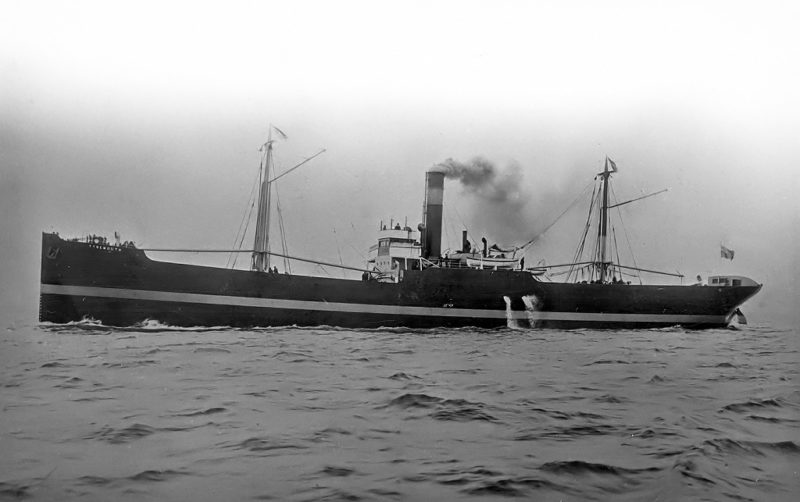
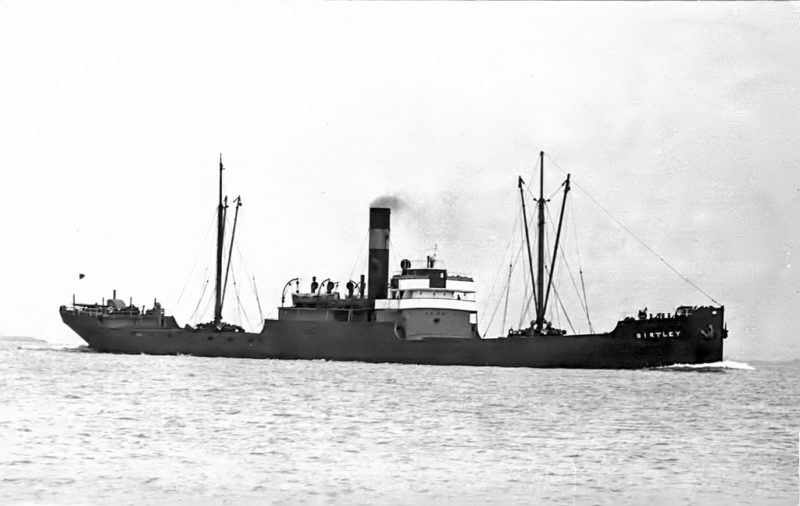
Three colliers Horden, Burnhope and Tynemouth were disposed of in 1928/29 to Newcastle and Cardiff owners in readiness for the delivery of the large tramps. Burnhope (3) was completed in February 1929 from the Northumberland yard followed by Tynemouth (4) in November of that year. They had five holds with well decks fore and aft at nos. 1 and 5 holds, and a cross-bunker hold between bridge and funnel. The smaller Holmside had only four holds, two forward and two aft of the midships accommodation.
The larger pair had hardly worked their way round the world before the worst shipping slump ever burst onto the world shipping scene. Matters were complicated by the delivery of the third tramp Holmside from Blyth in August 1930 and it soon became abundantly clear that the two largest tramps must be sold as they had earned no profit. Tynemouth was sold in 1932 to a Gibraltar company and renamed Statira, and Burnhope went to Greeks in the following year becoming Themoni. Three colliers were sold in 1933/34 to other Newcastle owners with Marsden (4) and Heworth going to the Tanfield S.S. Co. Ltd. and Hebburn to the Sheaf S.S. Co. Ltd. (W.A. Souter & Co. Ltd.) without change of name. Wallsend was wrecked at Caesarea on 16th February 1934 while on a voyage from Antwerp to Beirut with general cargo. The company emerged from the depression with Birtley and Towneley of 4,300 dwt and Holmside of 6,000 dwt.

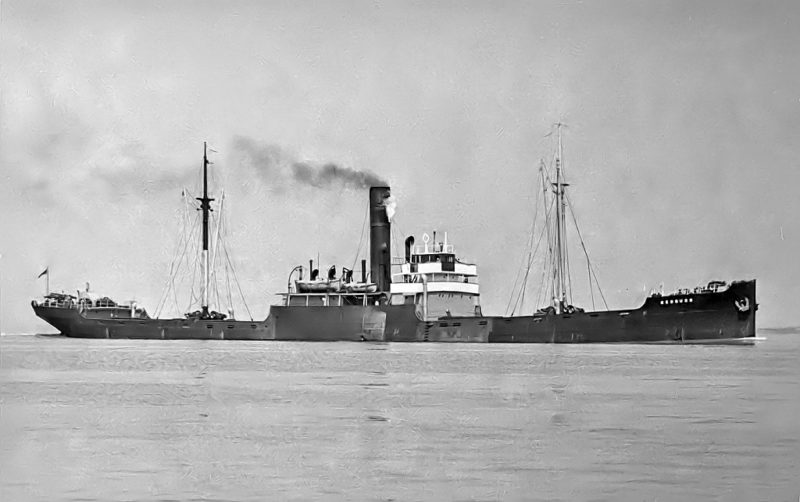

The improvement in world freight rates at the end of 1935 encouraged John Burnett that the time had come to rebuild the fleet, and soon after an order for a 5,000 dwt tramp was placed with Laing at Sunderland, delivered as Wallsend (4) in June 1937 with triple expansion engines by George Clark Ltd. These four were profitably employed at the start of WWII but all four were destined to be lost to the enemy:-
7.1.1940 – Towneley, mined and sunk off Margate on a voyage from the Tyne to Rouen with coal.
15.9.1941 – Birtley, mined and sunk North of Cromer on a voyage from London to the Tyne.
19.7.1941 – Holmside, torpedoed and sunk to North of Cape Verde Islands on a voyage from Hull to Pepel in ballast, 22 lost.
2.12.1942 – Wallsend, torpedoed and sunk to NW of Cape Verde Islands on a voyage from Liverpool and Glasgow for Freetown with 15 aircraft, 450 tons of cement and 320 tons of coal and mail. Four crew were lost and her Masterwas captured.
Holmside was the last ship out of Bergen on 8th April 1940 before the Germans arrived the following night, and she was also present at the evacuation of British troops from St.Nazaire in June of that year and took off Captain Davies and the crew of the Blue Funnel Teiresias which was lost in an enemy air attack outside the port limits. On her final voyage, Holmside was hit in the engine room by a torpedo from U-66 which devastated the whole midships accommodation and the two lifeboats and tore the ship apart. Sixteen survivors nearly all injured put off on three rafts and drifted for five days without food or water. Some had no clothing as the explosion had torn it from their bodies, and they were all picked up in bad shape by a Portuguese ship and taken to Lisbon.
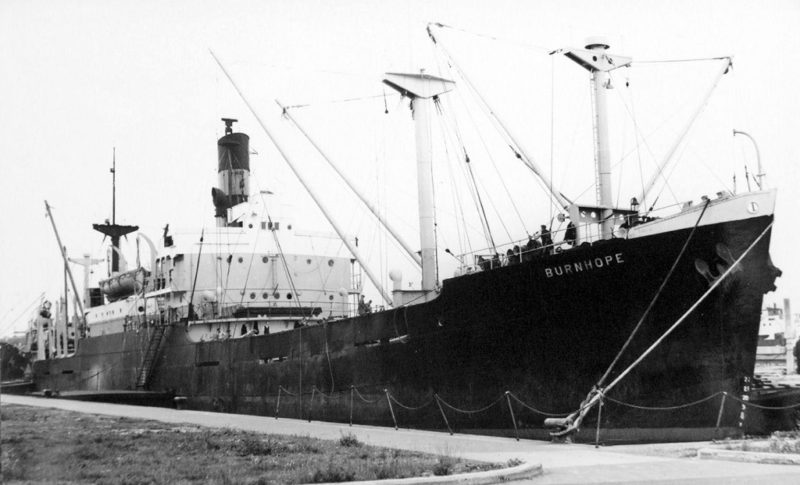
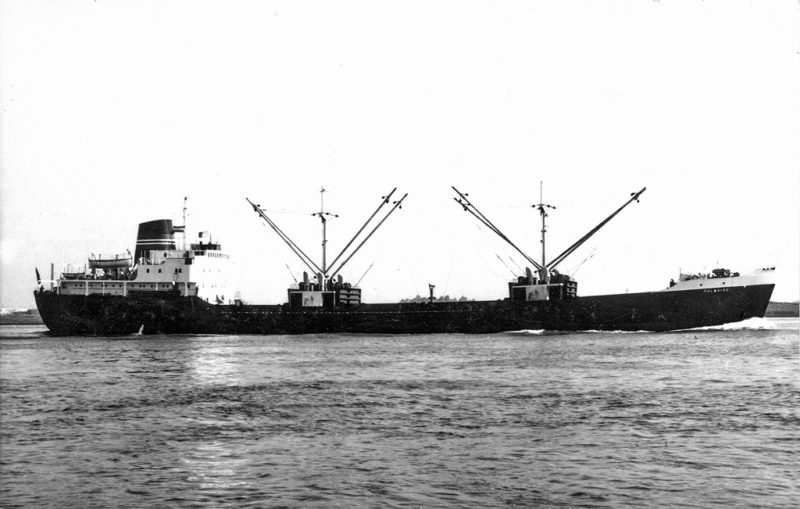
Tynemouth, a sister to the lost Wallsend, had been completed in July 1940 by Laing and she survived the war as the only owned tramp. The engines-aft collier Empire Sedge was managed by the company, as was the Scandinavian type Empire Thackeray with engines amidships and other foreign ships. Empire Sedge was purchased in 1945 and became Holmside (2), while two further Scandinavian types were purchased in 1946 and renamed Wallsend (5) and Burnhope (4).
The founder John Burnett died in 1946, and the other directors at this time were John Robson, P.E. Nicholson and Arthur Stott of Stott, Mann & Fleming. The four war-built tramps traded well for Burnett until Tynemouth was sold in 1952 to local owners Sharp S.S. Co. Ltd. becoming their Sandhoe for the next 11 years. A namesake joined the fleet in July 1955 from Smiths Dock Co. Ltd.. Tynemouth of 6,000 dwt was a four hold engines amidships steamer with engines supplied by the builder, with two masts and eight derricks worked from the two large deck houses. She was in collision with the British ship Inverewe of 11,821 grt at the entrance to the Mission River in the Great Lakes on 19th September 1964 while on a voyage from Chicago to New Brunswick. She proceeded to Montreal but had suffered considerable damage to her bows.
The collier Holmside was sold to Shamrock Shipping Co. Ltd. in 1956 and renamed Gransha, and the Scandinavian types Wallsend and Burnhope were sold to foreign owners in 1959/60 shortly after the delivery of the first motortramp in the fleet, Holmside (3), in August 1959. She was given a 6-cylinder Sulzer oil engine placed aft of her four holds. A slightly larger sister Gosforth (3) was completed by the same builder, Hall, Russell & Co. Ltd., Aberdeen, in January 1962 again with a 6-cylinder Sulzer oil engine. These two motor tramps were employed in St. Lawrence trading during the ‘open’ season from U.K. west coasts ports such as Bristol, Liverpool and Glasgow. Holmside was sold to Portuguese owners in 1969 and renamed Cabinda, leaving only Gosforth of 1962 in the fleet when an offer from Federal Commerce and Navigation Ltd. (FEDNAV) of Canada was accepted by the Burnett directors. The Newcastle company now acted as a subsidiary of the large FEDNAV Group engaged in U.K. to Canada trading. Two new large car carriers were registered in 1972/73 shortly after the disposal of the last conventional tramp Gosforth to Canadian owners. Laurentian Forest and Avon Forest were engaged in the export of British cars to Canada and were suitably equipped with large decks and ramps.
In 1974 Burnett acquired the whole share capital of fellow Newcastle tramp owner Chapman & Willan Ltd., gaining control of both the long established Carlton S.S. Co. Ltd. and Cambay S.S. Co. Ltd. and three bulk-carriers Frumenton, Carlton and Demeterton. Frumenton was quickly sold off but the other two were retained within the FEDNAV Group, which set up a management company in Newcastle called Burnett-Chapman Ship Management Ltd. to manage the three bulkers and two car carriers and other ships which FEDNAV transferred to the British flag.
All British operations of FEDNAV were now controlled from the Burnett office at Milburn House, Newcastle. The remaining two bulkers were sold to other Canadian owners in 1975, and the Burnett S.S. Co. Ltd. effectively withdrew from tramp ownership with the sale of their 13.1% holding in Glasgow tramp company Lyle Shipping Co. Ltd. in April, 1977. FEDNAV sold Laurentian Forest from the Burnett S.S. Co. Ltd. in 1980, and transferred her sister Avon Forest from the Burnett company to the Carlton S.S. Co. Ltd. in 1982, thus finally ending the Burnett story.
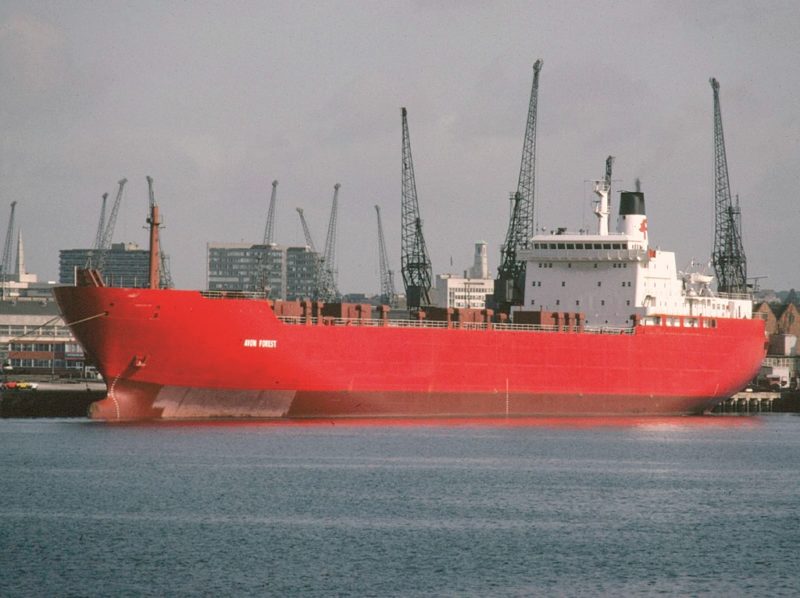

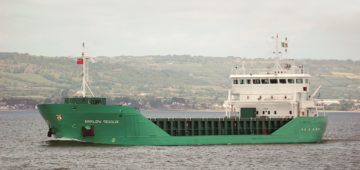



Comments
Sorry, comments are closed for this item